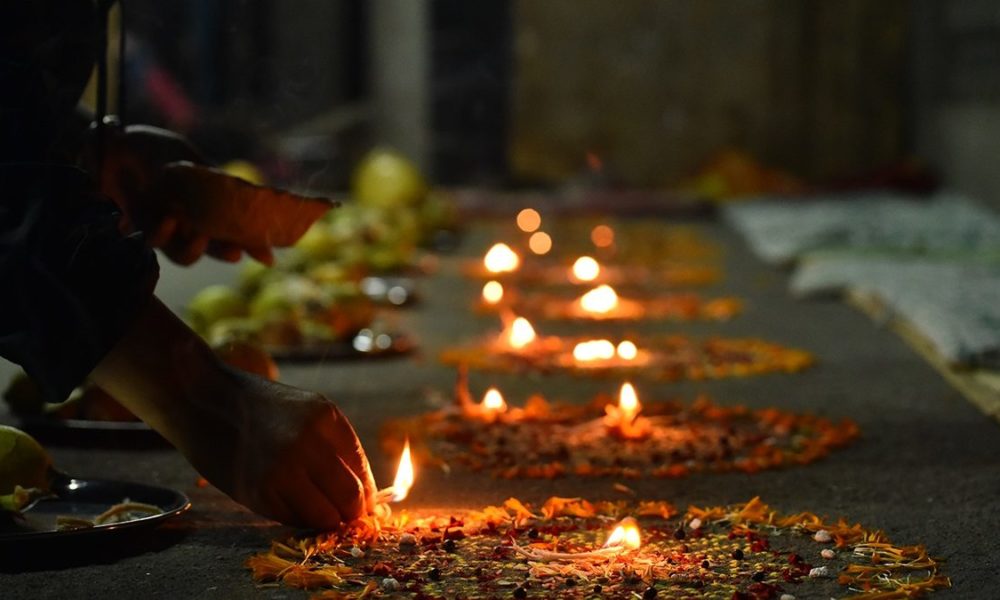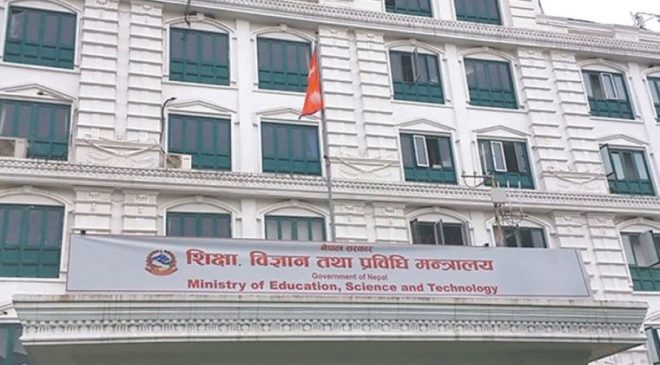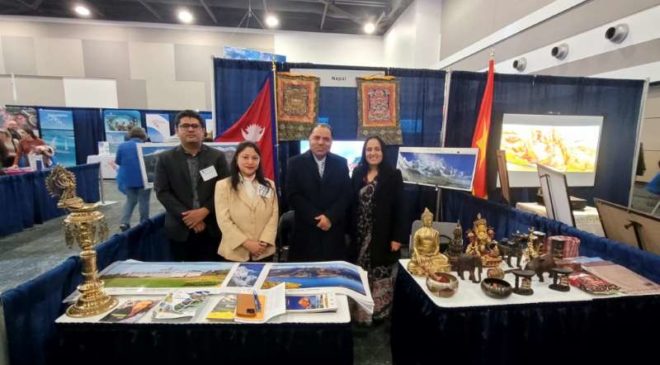14 November, KATHMANDU – The Yama Panchak Tihar on one hand is a festival of colorful lights, flowers, and of course the color. And, on the other hand, it is festive of gambling and a celebration where siblinghood is celebrated. The festival likewise brings the darkest and the brightest night of the year altogether.
This tihar festival is also related to the God of death, Yama, and is celebrated for five consecutive days. Perhaps, that’s why it is called Yama Panchak tihar. One can notice, there are two specific days in tihar where the crow and the dog are worshipped who are very well known as the messenger of the Yama.
Where entire Nepal ken this festival as Yama Panchak Tihar, the newar celebrate it as Swanti. About the name Swanti, it is believed that the word was derived from Swahni, which means the three days. The last three days of the sequence, that includes the day of the lunar new year and the day after and before the new year.
And if we practically analyze these days, then yes, within these three days the main events and incidents do occur. Within them too, the fourth day seems quite busy at all.
On that single day, a lot of things took place like, the new year, then Mha puja, on the other side the Goverdhan Puja. Uff…What a busy day?
The New Year of the Newa People and Mha Puja
Happy New Year!
Umm, No, it’s better this way, “Nyugu da ya Bhintuna”. Isn’t it?
Yes, of course. It is.
And here, Nyugu da means the new year, and Bhintuna refers to warm wishes in the Nepal bhasa or in the newa language. Wishing people in this way at least brings a smile on their faces. On this date, the newa people from all over Nepal celebrate the Lunar New Year which year is more popular than the Nepal Sambat.
According to the found pieces of evidence, Nepal sambat was founded on October 20, 879 AD during the reign of Thakuri king, Raghavadeva. And, people celebrate it in their own way. Like, wearing the newa attire and go for the rally and all.
Besides the newa people, others celebrate Goverdhan puja on the same day.
Mha Puja
Mha puja, a year awaited moment of the newa people, is an annual ritual performed by the newar community of Nepal which means worshipping oneself. Of course, worshipping oneself, why wouldn’t be it special and wait an entire year for it, isn’t it?
I personally, wait for this day. Coincidentally or relatively, Mha puja and the new year lie on the same date. There must be some connection between these two events.
It is the fourth day of Yamapamchak Tihar. So, people also get themselves busy playing deusi. Deusi is a kind of ritual where a group of boys performs a dance as well as singing to bless the house. I remember waiting for my brother who eventually still goes out to play deusi and forgot that it’s mha puja and he also needs to be glorified.
Why Mha puja is done in the evening?
Coming back to the Mha puja.
Generally, Mha Puja is done in the evening or in the afternoon, somewhere at night, just to make sure that Mha puja of Aagandya ( the family goddess) and the goddess Taleju Bhawani of the three cities of Kathmandu Valley has already been conducted by the high newar priests or not.
The significance of Mha Puja
Mha puja seems very important because this ritual is done for the purification and empowerment of the soul as a part of the new year celebration.
The fourth day of the five-day sequence, and the middle day of the focal ultimate three days, the lunar New Year’s Day itself, and the first day of the waxing fortnight Kachalathwa is the day of Mha Puja. Mha Puja, which is also one of the pieces of the Swanti sequence.
But the Newa people consider it to be very precise that other than Newa people do not celebrate it.
People except for Newa background might have a curiosity that what Mha puja actually means. Like the terms? What does it mean?
Well, the term Mha means a body that apparently represents the dynamic seat of each individuals living in the family. Essentially, Mha Puja is the worshiping of each member of the family too. And that act is done by the superior active woman of the household. Like our mom or grandmother, they are called Nakin.
You know what Nakin actually means to the chief, the prime minister of a house.
The basic elements and the procedure of Mha Puja
I believe like every other ritual of Nepal, Mhapuja is also bound with some procedure.
Basically, the elements that are used in Mha Puja are almost the same for all Newars. Even the procedural details. However, some rituals may vary from family to family. Besides, it’s almost the same.
Let’s start with my favorite part, the mandalas.
For Mhapuja, a mandala is a must and should be drawn on a refined surface of the floor. That each for the members of the family. It should be made for those family members too who are momentarily absent, and thus are worshiped in absentia.
Ah! there, I read it somewhere that some families make mandalas for their pets too. In that sense, the mandalas depict the human or pet’s body.
Here, mandalas are all decored by unhusked rice, into some five piles. It is believed that it represents the five major elements. Elements like, earth, water, fire, air, ether of which the human body is supposed to be formed and into which it is terminated.
But this is not the fact cause of which I like mandalas. I like it cause we can make them by ourselves using any design. But yes, it should start and end as a circle.
However, the mandala is swept up, somewhere before, somewhere after the sagun is given, depending on the family custom. In our place, it is done after the feast.
Then, a covering of leaves is placed over those piles, and various offerings are arranged on it, such as beaten rice, water, ceremonial threads like kwokha, flowers, incense, lamp threads. With that, the fruits, at least of five types, if possible.
You must have noticed that too if you belong to a Newa household and attend Mhapuja. The guava, it is never missed on that leave’s place.
Do you know how we place during Mhapuja?
We all know that the eldest female member i.e. the nakin of the family worships each member of the family. There, she starts it first from males, then to females, in order of descending age. She does repeat the same sequence for each family member.
Then, she begins putting tika on each member of the family, offerings threads, flowers, garlands, sweets, and fruits to them.
She holds a traditional urn, something similar that used in kuchi bhwey, measuring equipment, where she puts some flowers, mutumari (a traditional newari dish specially prepared for swanti), and other minor ingredients and touches the foot, shoulders, and head from that urn before pouring all those things on our head.
It literally feels like flowers falling for us from the sky.
Nextly, she offers the meat and fish containing the mixture, samhae to each family member, which after the feast begins as nourishing to ensure long life and good fortune for the family members.
Things that you might not know about the Mha Puja
- Married daughters are not allowed to perform this puja. And there are only a few newars who don’t perform this ritual or the festival.
- The Buddhists Newars also observe the puja as an auspicious start to gain the 32 Lakshana (features) of Buddha through principles and good deeds.
- Circles of Mandala signifies the completeness.
- The mandala symbolizes the world and the fruits and Sagun symbolizes the offerings made by the earth.








